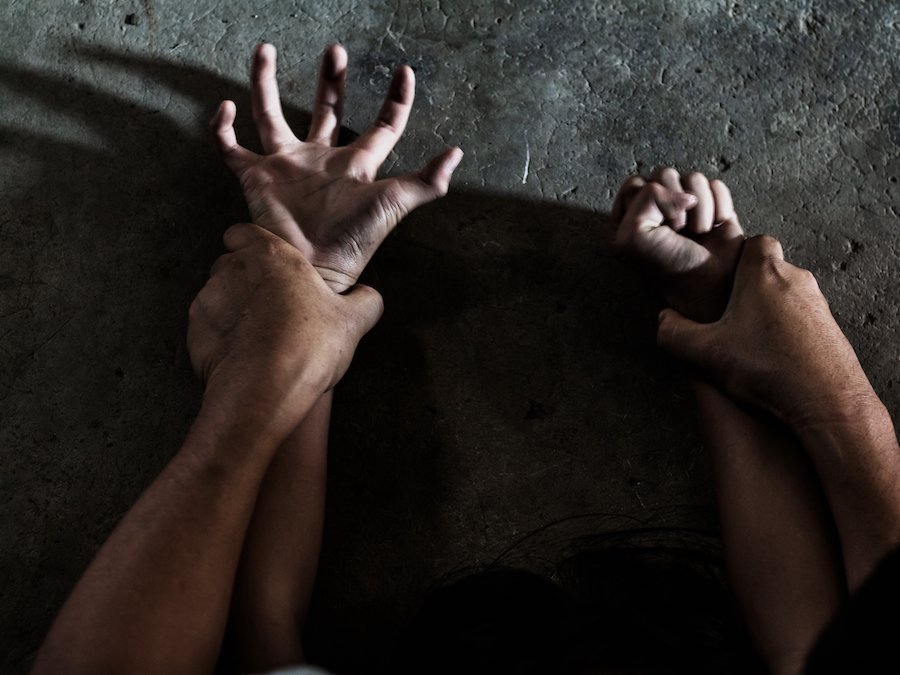Updated
Class 2 felonies are the second-most severe type of criminal offense in Arizona. Convictions carry fines and typically up to 12 years and 6 months in prison. The sentencing can be up to 35 years if the crime was a dangerous offense, the defendant has a criminal record, and there were aggravating factors.
1. What is a Class 2 felony?
A Class 2 felony is a type of crime in Arizona.
Criminal offenses are divided into 3 types in the state. There are:
- felonies, which carry more than a year in state prison,
- misdemeanors, which carry less than a year of prison time, and
- petty offenses, which are not punishable with jail time.
All felony convictions are more serious crimes than misdemeanor convictions. All misdemeanors, meanwhile, are more severe than petty offenses.
Felonies and misdemeanors are further divided into classes. In descending order of severity, felonies can be a:
- Class 1 felony,
- Class 2 felony,
- Class 3 felony,
- Class 4 felony,
- Class 5 felony, or a
- Class 6 felony.[1]
Class 1 felonies are the most severe. Crimes like first-degree murder or second-degree murder are Class 1 felonies. In some cases, they can carry the death penalty. Class 6 felonies are the least severe. They include many crimes involving theft of property or driving under the influence (DUI).
Class 2 felonies are further divided into:
- non-dangerous offenses,
- dangerous offenses, and
- dangerous crimes against children.
A dangerous offense is a crime involving the:
- discharge, use, or a threatening exhibition of a deadly weapon or dangerous instrument, or
- knowing infliction of a serious physical injury.[2]
A dangerous crime against a child is an eligible offense where the victim is under 15.[3]

Sexual assault is a class 2 felony in Arizona.
2. What are some examples?
Examples of dangerous Class 2 felonies include:
- manslaughter,
- sexual assault,
- armed robbery,
- aggravated assault leading to serious injury,
- arson of an occupied building, and
- any dangerous crime against children.[4]
Some examples of non-dangerous Class 2 felonies are:
- theft of property valued at $25,000 or more,
- theft by extortion,
- first-degree trafficking in stolen property,
- first-degree money laundering,
- owning or operating a chop shop, and
- certain severe drug crimes.
The following offenses are dangerous crimes against a child when the victim is under 15 years old:
- sexual abuse or sexual assault,
- sex trafficking,
- child molestation,
- kidnapping,
- second-degree murder, and
- using a minor in a drug offense.[5]
3. What are the penalties for these Arizona felonies?
Convictions for Class 2 felonies carry the following penalties:
- up to $150,000 in fines,[6] and
- a prison sentence.
The prison sentence for a Class 2 felony will depend on:
- whether the offense was a dangerous one or against a child,
- any previous convictions on the defendant’s criminal history, and
- whether the offense is a repetitive offense, or one that involved several incidents that did not occur at the same time.
There are also sentencing ranges for felony convictions in Arizona. There are 5 possible jail sentences. From shortest to longest, they are:
- mitigated,
- minimum,
- presumptive,
- maximum, and
- maximum
This can be confusing. The mitigated jail term is shorter than the minimum sentence, while the aggravated term is longer than the maximum.
When deciding an appropriate sentence for a class of felony, courts look to mitigating or aggravating factors in the offense. The presence of these factors can increase or decrease the jail sentence from the presumptive term. If there are multiple mitigating factors, the sentence can be dropped to lower than the minimum prison term. If there are multiple aggravating factors, the final sentence can be longer than the maximum term.
Arizona law lays out 27 potential aggravating factors that courts must consider during a sentencing hearing. They include:
- using a mask during the crime to avoid detection,
- impersonating a police officer during the offense,
- lying in wait for the victim,
- the victim was over 65 years old or had a disability, and
- using an accomplice to commit the crime.[7]
There are 6 potential mitigating factors. They include:
- the defendant’s age,
- unusual duress,
- the defendant’s incapacity to fully appreciate the wrongfulness of his or her actions, and
- the defendant’s character or background.[8]
An effective defense lawyer will stress these mitigating factors in an attempt to reduce the sentence.
3.1 Non-dangerous Class 2 felonies
Defendants convicted of a non-dangerous Class 2 felony face the following sentencing range, depending on the category of their criminal background[9]:
| Category of criminal background | Mitigated sentence | Minimum sentence | Presumptive sentence | Maximum sentence | Aggravated sentence |
| No prior felonies | 3 years | 4 years | 5 years | 10 years | 12 years and 6 months |
| Category 1 repetitive offender | 3 years | 4 years | 5 years | 10 years | 12 years and 6 months |
| Category 2 repetitive offender | 4 years and 6 months | 6 years | 9 years and 3 months | 18 years and 6 months | 23 years |
| Category 3 repetitive offender | 10 years and 6 months | 14 years | 15 years and 9 months | 28 years | 35 years |
Defendants have to be at least 18 or tried as an adult to be considered a Category 2 or 3 repetitive offender. Category 2 repetitive offenders have 1 historical prior felony conviction.[10] Category 3 repetitive offenders have 2 or more of these convictions.[11]
Not all prior felony offenses count as a historical prior felony conviction, though. Some of the most common historical prior felony convictions that can make a defendant a repetitive offender include:
- offenses that come with mandatory terms of imprisonment,
- dangerous offenses,
- aggravated DUI,
- dangerous crimes against a child,
- Class 2 or 3 felonies that happened within 10 years of the offense, and
- Class 4, 5, or 6 felonies that happened within 5 years of the offense.[12]
Where the defendant has been convicted for multiple felony offenses at the same time, the defendant is treated as:
- a first-time offender for the first charge,
- a Category 1 repetitive offender for the second charge, and
- a Category 2 repetitive offender for each of the rest.[13]
3.2 Dangerous Class 2 felonies
Defendants convicted of a dangerous Class 2 felony face the following sentencing range, which does not include mitigated or aggravated terms[14]:
| Minimum | Presumptive | Maximum | |
| No prior felonies | 7 years | 10 years and 6 months | 21 years |
| 1 historical prior conviction for a dangerous offense | 14 years | 15 years and 9 months | 28 years |
| 2 or more historical prior convictions for dangerous offenses | 21 years | 28 years | 35 years |
If the defendant is facing multiple Class 2 felonies that are dangerous offenses, then the second and each subsequent offense carries the following sentence ranges[15]:
| Minimum | Presumptive | Maximum | |
| Second offense | 10 years and 6 months | 21 years | 26 years and 3 months |
| Subsequent offenses | 15 years and 9 months | 28 years | 35 years |
Defendants convicted of a dangerous Class 2 felony are generally not eligible for:
- suspended sentences,
- probation,
- parole, or
- other release from confinement.[16]
3.3 Dangerous Class 2 felonies against children
There is a separate set of sentencing ranges for dangerous crimes against children.
These are certain, specific crimes, where the victim was under 15.[17]
When the victim was under this age at the time of the offense, the classification of the felony does not impact the sentence. Instead, Arizona law sets out a unique sentence because the victim was underage.
For example, kidnapping can be a Class 2, 3, or 4 felony. Typically, this would mean that the sentencing range would be:
| Kidnapping Class | Minimum | Presumptive | Maximum |
| Class 2 felony | 3 years | 5 years | 12 years and 6 months |
| Class 3 felony | 2 years | 3 years and 6 months | 8 years and 9 months |
| Class 4 felony | 1 year | 2 years and 6 months | 3 years and 9 months |

Kidnapping a child is a class 2 felony in Arizona.
However, if the victim was under 15, the sentencing range will be[18]:
| Minimum | Presumptive | Maximum | |
| First-time offense | 10 years | 17 years | 24 years |
| 1 or more predicate felony | 21 years | 28 years | 35 years |
4. What is the statute of limitations?
The statute of limitations for Class 2 felonies in Arizona is typically 7 years. This means that prosecutors generally have to file Class 2 felony charges before 7 years have passed since the offense.
If charges are not filed before this time frame has expired, a criminal defense attorney can raise the statute of limitations as a defense. If successful, the judge will dismiss the criminal charges.
However, certain severe criminal cases do not have a statute of limitations, at all. This includes some Class 2 felonies like:
- sexual assault,
- sexual exploitation of a child, and
- crimes involving weapons or explosives.[19]
For these offenses, the prosecutor can file the charges at any time after the incident.
[1] ARS 13-601(A).
[2] ARS 13-105(12)-(13).
[3] ARS 13-705(Q)(1).
[4] ARS 13-105(13).
[5] ARS 13-705(Q)(1).
[6] ARS 13-801.
[7] ARS 13-701(D).
[8] ARS 13-701(E).
[9] ARS 13-702 and 13-703.
[10] ARS 13-703(B).
[11] ARS 13-703(C).
[12] ARS 13-105(22).
[13] ARS 13-703.
[14] ARS 13-704(A)-(E).
[15] ARS 13-704(F).
[16] ARS 13-704(G).
[17] ARS 13-705(Q)(1).
[18] ARS 13-705(D).
[19] ARS 13-107(A).
